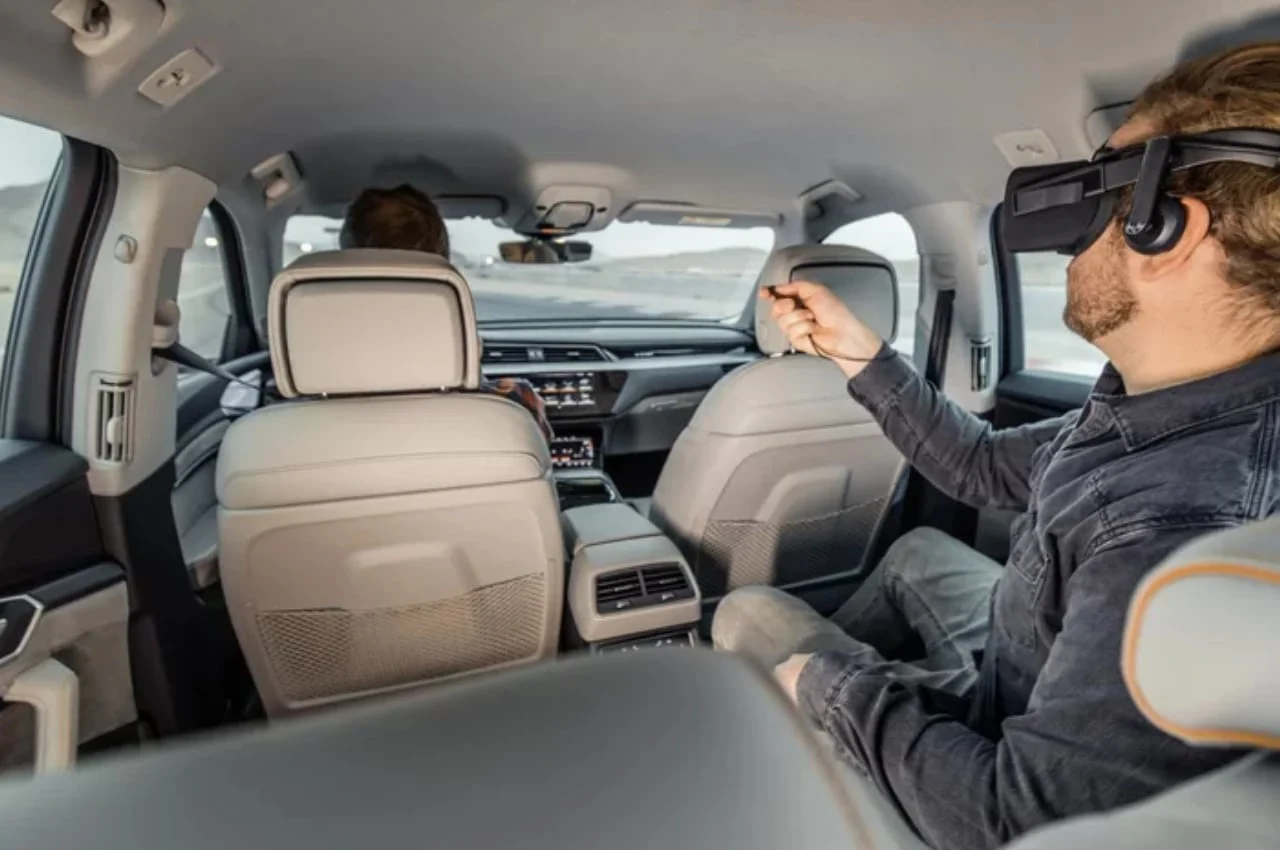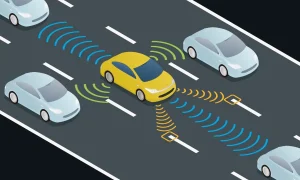
The Future of In-Car Entertainment and AR
AR is set to revolutionize the entertainment industry, from live events and movies to virtual video games and interactive learning experiences/simulations.
On the automotive front, startups such as Drivetime and Portl Media are creating in-vehicle content streaming services that generate advertising revenue, from which ride-hailing companies could take a share.
Drivers can see their surroundings.
Consumers have become accustomed to using voice control for basic convenience and entertainment functions such as “Siri, tell me the time” or “Alexa, play my rockin’ playlist.” Therefore, voice-based technology should extend into car environments for even greater ease while driving.
AR is a visual technology that overlays digital information onto real world environments. Automotive applications typically employ this technique via an HUD (Heads Up Display). More and more navigation systems are being enhanced with AR to give drivers access to route details directly on the road without needing to look away from the windshield for guidance.
Another AR feature used for lane detection is lane highlighting, which highlights which lane you are driving in to make staying within it easier and also serves to alert drivers if they begin leaving their lane. In one study involving such an oncoming car navigation ambiguity situation, glance and driving behavior analyses were carried out post drive to assess whether displayed information influences driver attention and subsequent driving patterns.
Passengers can play games.
Gaming is a big industry, with more people engaging with video games than watching movies or listening to music. That is why automotive manufacturers such as HARMAN are developing in-car entertainment experiences using AR that turn boring backseat rides into virtual thrill rides.
These technologies enable passengers to use their smartphones as in-car entertainment while the driver remains focused on driving safely. Passengers can play augmented reality (AR) games or create playlists to complement their road trip, while also receiving real-time navigation and somatosensory feedback to maintain situational awareness.
These tech tools can also assist drivers with navigating busy urban streets or unfamiliar routes by projecting navigation instructions onto windshields or smartphone screens, and by showing digital markers to identify passengers so faster pickups occur.
Drivers can learn.
AR technology enables drivers to view directions directly overlaid on their environment, eliminating the need to avert their eyes and potentially helping prevent distraction-related accidents.
Markerless AR technologies automatically detect and map a user’s environment using device sensors such as GPS or accelerometers, providing more spontaneous and immersive experiences for the user.
AR is also providing students with immersive learning experiences at both public and private schools, while virtual reality (VR) offers an engaging way for new drivers to learn the rules of the road without the risks associated with real world driving. UPS, for example, has experimented with VR to train its mechanics on how to operate trucks they repair; VR also helps train them on maintaining awareness of all possible blind spots or hazards around them – something UPS mechanics use regularly when operating trucks of their own.
Drivers can do maintenance.
Technology that lets drivers watch TV, play games and access information while on the road also can assist with maintenance in various industrial settings. From working on cars or aircraft ready for flight to keeping industrial machinery maintained effectively and on schedule, AR technology enables technicians to view step-by-step instructions overlaid directly on equipment to cut manual reading time, repair processes faster and downtimes significantly.
Manufacturers stand to gain from this breakthrough as it simplifies and expedites the experience of providing in-car entertainment, as well as helping reduce driver distraction. This type of content has long been an issue.
OEMs are increasingly offering voice control of streaming media and other features in their vehicles, taking a cue from consumer preferences for personal digital assistants such as Alexa or Siri. Consumers can easily imagine similar capabilities being integrated into car systems.



